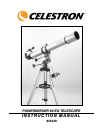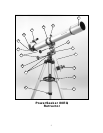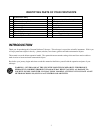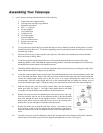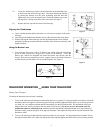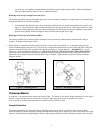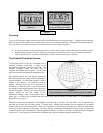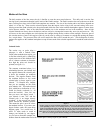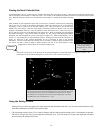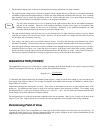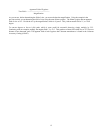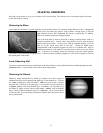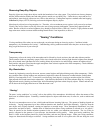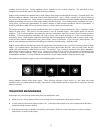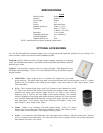
If you are observing from Los Angeles, which has a latitude of 34°, then the celestial pole is 34° above the northern horizon.
All a latitude scale does then is to point the polar axis of the telescope at the right elevation above the northern (or southern)
horizon. To align your telescope:
1. Make sure the polar axis of the mount is pointing due north. Use a landmark that you know faces north.
2. Adjust the mount in altitude until the latitude indicator points to your latitude. Moving the mount affects the angle
the polar axis is pointing.
This method can be done in daylight, thus eliminating the need to fumble around in the dark. Although this method does
NOT put you directly on the pole, it will limit the number of corrections you will make when tracking an object.
Pointing at Polaris
Latitude
Scale
Right
Ascension
Lock
Declination
Lock
Latitude Adjustment
Screws
Figure 10 – Equatorial Head
This method utilizes Polaris as a guidepost to the celestial pole. Since
Polaris is less than a degree from the celestial pole, you can simply point
the polar axis of your telescope at Polaris. Although this is by no means
perfect alignment, it does get you within one degree. Unlike the previous
method, this must be done in the dark when Polaris is visible.
1. Set the telescope up so that the polar axis is pointing north. See Figure 11.
2. Loosen the DEC clutch knob and move the telescope so that the tube is
parallel to the polar axis. When this is done, the declination setting circle
will read +90°. If the declination setting circle is not aligned, move the
telescope so that the tube is parallel to the polar axis.
3. Adjust the mount in altitude and/or azimuth until Polaris is in the field of
view of the finder.
4. Center Polaris in the field of the telescope using the fine adjustment
controls on the mount.
Remember, while Polar aligning, do NOT move the telescope in R.A. or DEC. You do not want to move the telescope itself, but the
polar axis. The telescope is used simply to see where the polar axis is pointing.
Like the previous method, this gets you close to the pole but not directly on it. The following methods help improve your accuracy for
more serious observations and photography.
Figure 11- Aligning the Equatorial mount to the polar axis of the Earth.
9



